
I wanted to design a game to teach people about spoon theory (https://butyoudontlooksick.com/articles/written-by-christine/the-spoon-theory/), a framework for understanding the limited energy/capacity that can accompany some disabilities. The basic idea is that you have a limited number of spoons every day. Each time you do an activity – even something small, like taking a shower or getting coffee – you use up a spoon. If you run out of spoons, and energy, then, well, that’s your day. I wanted to reimagine that exercise, where you show someone how your spoons are used up by daily activities. Instead, I put the player in the shoes of the disabled person, with a limited supply of spoons to try and a list of activities they have to try and complete. I wanted to help players to empathize with, and better understand, the experience of having limited spoons.
To do so, I created a single-player puzzle game, similar to MatchX mobile games like Grindstone. The fun comes from the challenge, as well as, to a lesser extent, sensation (the auditory/visual feedback as you play). The core challenge is navigating your way though the game, trying to manage your limited spoons while still achieving your goals. My learning outcome is increased empathy for people with limited capacities. I had a few concerns with the project. First, the experience I’m trying to convey is often frustrating – I had to try and evoke that, without simply making players give up. Second, it’s necessarily abstracted from the actual experience of disability – I wanted to make sure that those abstractions weren’t so far removed as to lose their impact.
Assessment
After playing the game, I asked people to rate how well the game evoked a sense of empathy for folks with limited spoons on a 1-5 scale. Originally I planned to track familiarity with spoon theory as well, but it turned out all of my playtesters were well-versed in it and exclusively gave 4’s or 5’s beforehand, so I ended up dropping that metric as it never changed.
The initial version of the game, semi-finished and with placeholder art, scored the lowest with a 1. At the time, I thought this was because I didn’t provide enough context and theme, and the mechanics were too spare and abstract.
The second version scored the highest, with 4s from both playtesters. That version was more complete, but you still couldn’t undo moves, and the special tiles were broken. Rather than a well-written rules booklet, they had to make due with a verbal explanation. All of this combined to make a challenging experience for both players, but not a fun one. The frustration and friction they experienced did promote the types of feelings I was looking for, but not for the right reasons.
The final version fixed many of these issues. It had written rules, the ability to undo, and fixed bugs. However, it received scores of 2, 2 and 3. I’d overcorrected, and made the game too easy to be challenging. Even though it had more explicit connections with the theme, and more developed gameplay, the ease of winning – and the ability to endlessly acquire extra turns in particular – ended up almost completely undermining the intended experience of limited capacity.
This tension: trying to evoke the sense of frustration disabled people experience, but still making the game fun, is something I’ve tried to resolve in the final design. With the core mechanics set, I tweaked some of the levers in the design that let me adjust balance: namely the special tiles, and the size of the board. Although I haven’t been able to playtest to verify it, I suspect that this iteration would do better. The mechanics themselves can get across the learning I’m looking for, as version 2 showed, but the difficulty needs to dialed in to make that happen.
The Game, and The Rules
Spoon Theory is a puzzle game, where you have a limited number of turns (represented by spoons) to try and collect enough colored tiles (mental/physical/emotional energy) to complete your list of goals for the day (objectives, each of which required x amount of each energy).
The rules available to players also include the article linked above, and a brief explanation of the game, but I imagine that would be redundant here. They are available in the Google doc linked at the end, however!
This is what you’ll see when you open the game:
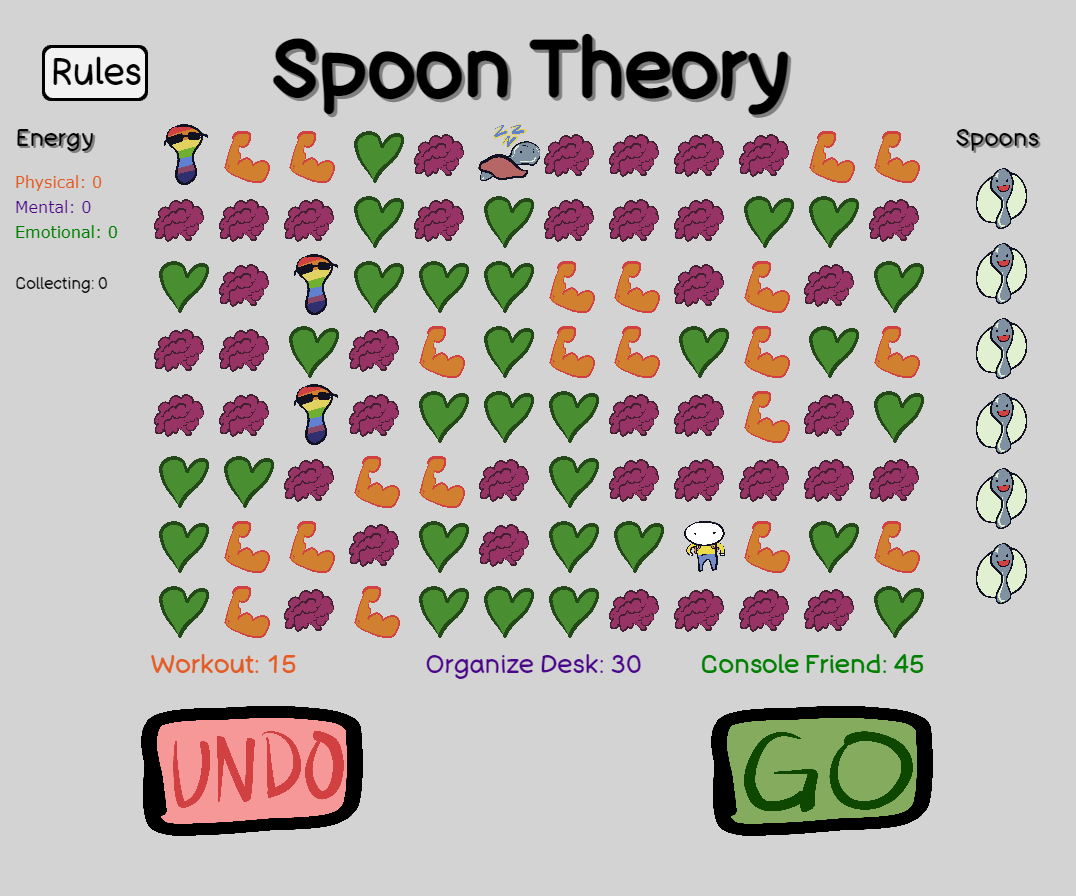
You are this little guy (towards the bottom right in the photo above):
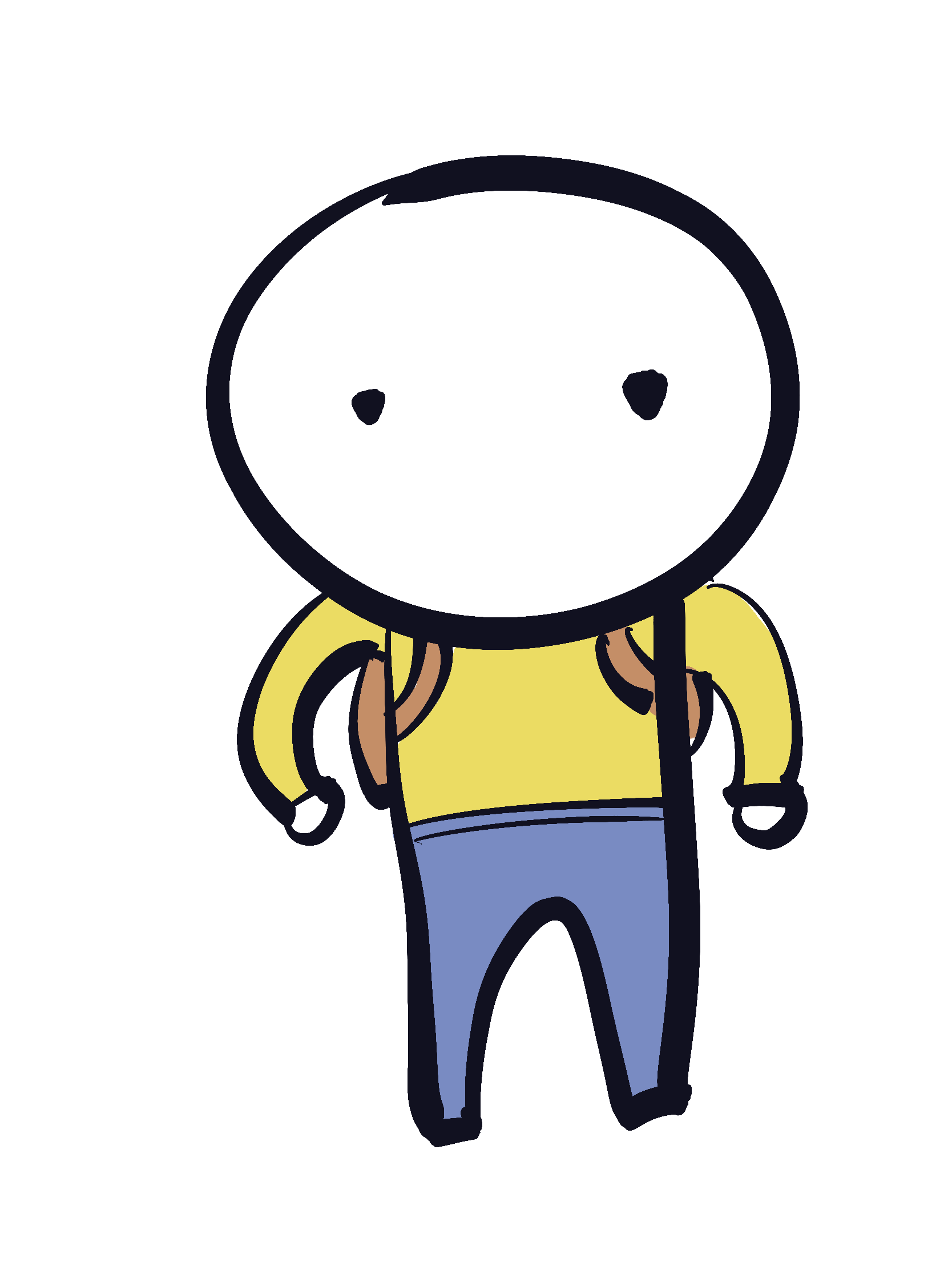
You only have 6 turns (represented by the spoons in the top right) to complete all of your goals. Every turn will use up a spoon, and the counter will decrease (as shown below).


Collecting Tiles
To complete your goals, you need to collect tiles of matching colors, which correspond to physical, mental and emotional energy:
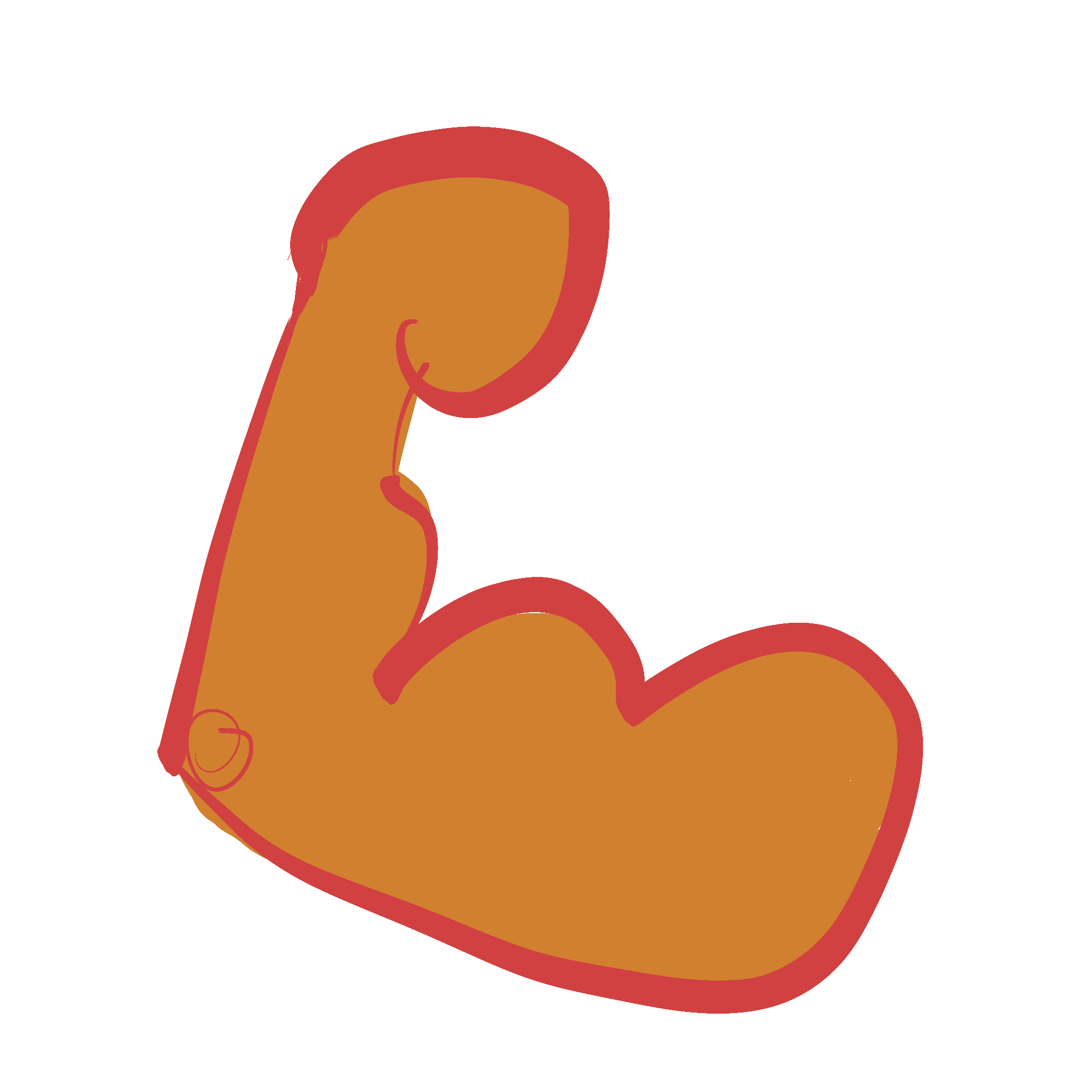


To collect them, start by clicking on a tile next to your character, and then draw a chain of matching tiles to get as many as you can. Your path will change to match whatever color of tile you’re collecting!
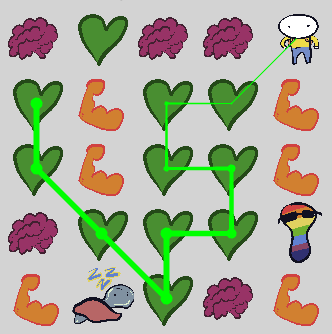
Once you’re finished drawing out your path, hit the ‘Enter’ key or the ‘Go’ button – in the bottom left of the screen – to collect the tiles you’ve drawn a path through. If you want to reset your path, and draw it differently, or choose a different color of tile to start with, hit the ‘Undo’ button, or ‘Backspace’, found in the bottom right.
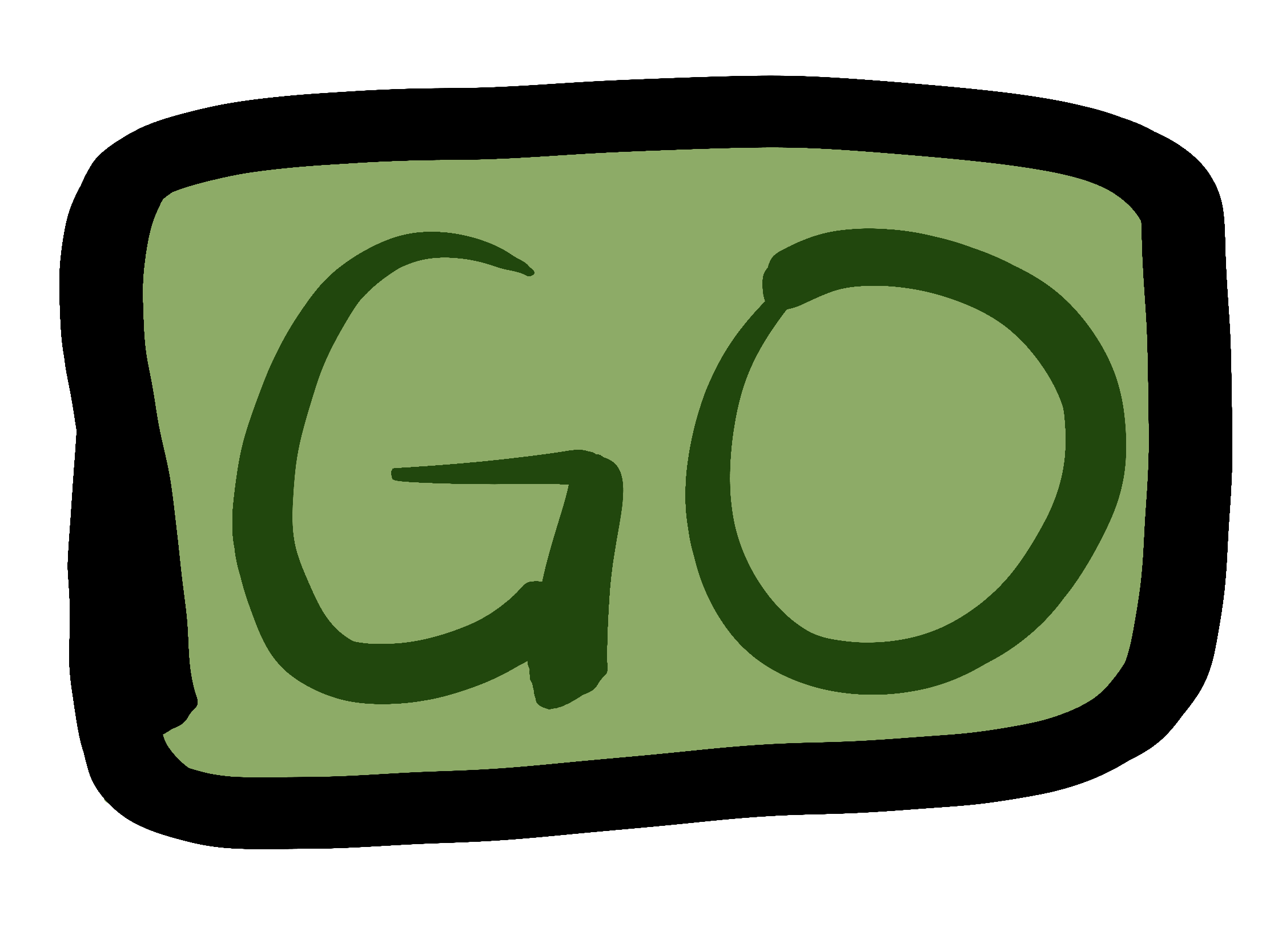
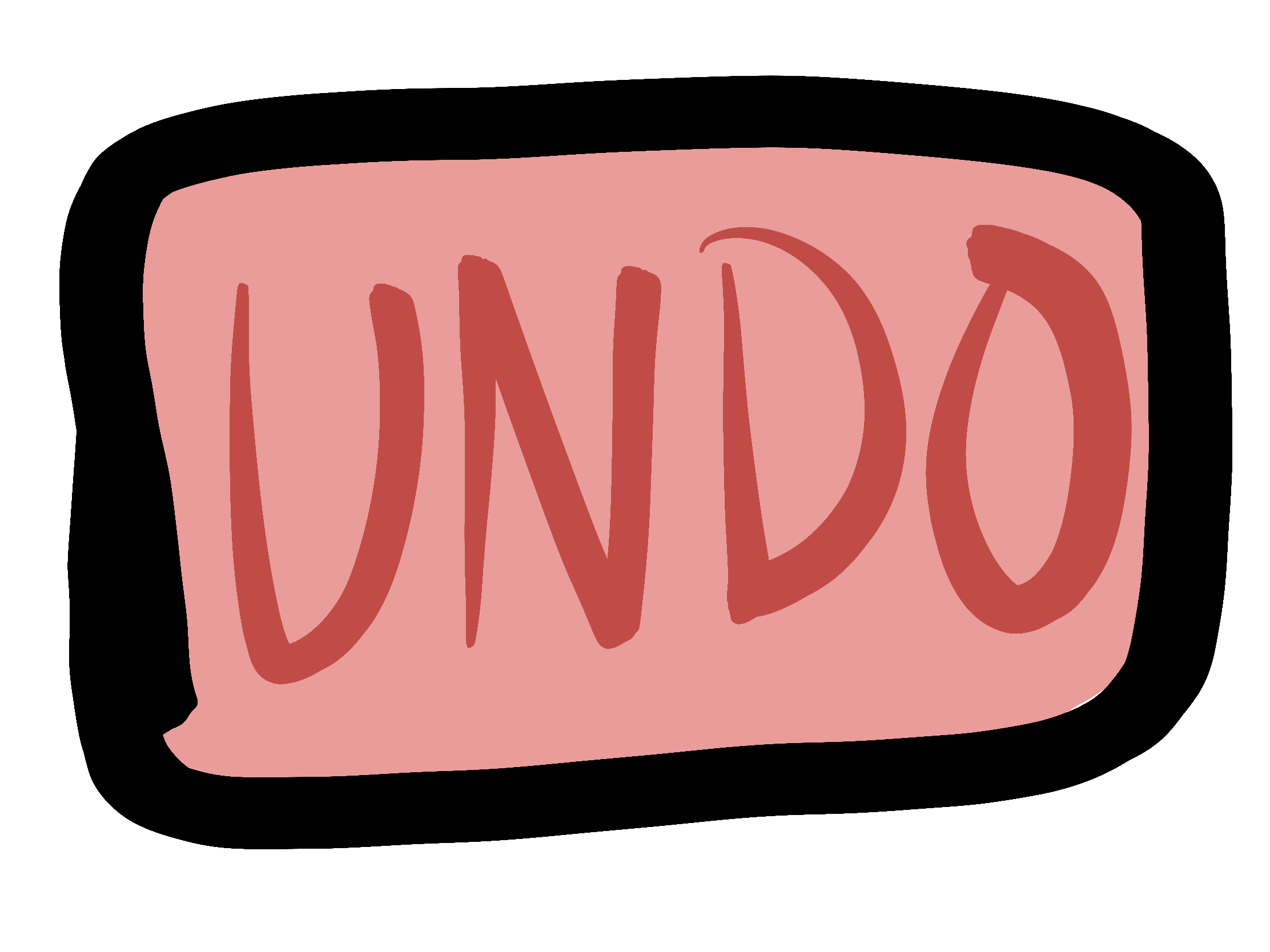
Special Tiles
Along the way, you’ll also see some tiles that aren’t physical, mental or energy.
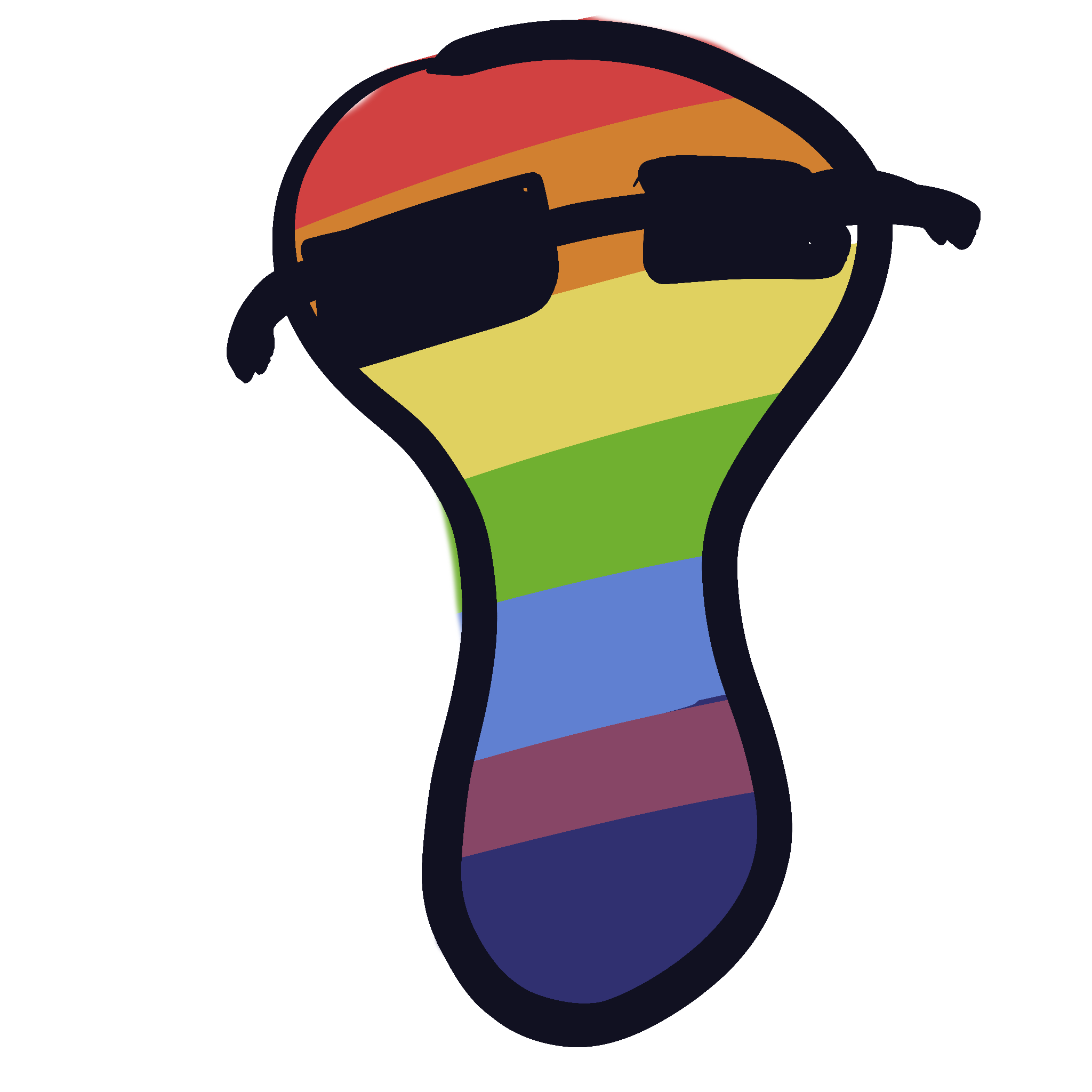
The first is this little rainbow spoon. Adding it to your path lets you choose a tile of a different color for your next move – for example, if you’ve been collecting orange, but then pass a rainbow spoon, you can collect green ones for the rest of the path. Your path will turn multi-colored to indicate this!
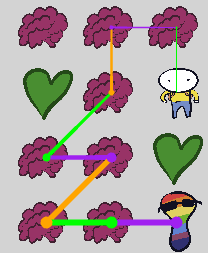
The second is this little napping spoon. Collecting this tile lets you take a quick nap, and gain an additional turn (another spoon). You can select this tile regardless of the color you’re currently collecting, but it won’t let you change which color you collect afterwards like the rainbow spoon does.

Tracking Progress
To track your progress, there’s an ‘energy’ tracker in the top left of the screen, which shows how much mental, physical and emotional energy you have collected overall. At the bottom are your three goals, each of which corresponds with one of the types of energy (colors).

![]()
As you press ‘Go’, and collect tiles, these will increase, and automatically be applied towards the corresponding goals, and the number required for each will decrease.

![]()
Finishing the Game
Once all 3 goals reach 0, you’ve completed all your tasks and win! If you’re unable to finish them all before running out of spoons, well, that’s a very common experience. Press refresh and try again tomorrow!
History
Version 1:
Playtester:
- William, 29, M, Psychology Grad Student

Initial Version
- 6 x 6 grid of tiles
- 2 goals to achieve (one was bugged thanks to a mixed up color; this wasn’t definitively fixed until the final version)
- Temporary art
This first version of the game had a very small board of tiles with two goals, but the same basic rules as described above except for the special tiles. I was trying to make it a small, tightly designed experience where you have a small set of moves to make, and each is meaningful. However, my first playtester encountered a couple points where it was just impossible to win, and the random replacement tiles made it hard to strategize about where to go. Ultimately, in order to make it a compelling puzzle experience I would have to be much more intentional about placing tiles: the game as presented just didn’t give that experience. The art also did very little to get across the theme of the game, and was quickly replaced.
Version 1.5:
Playtester:
- Mae, F, 22, Social Work Grad Student
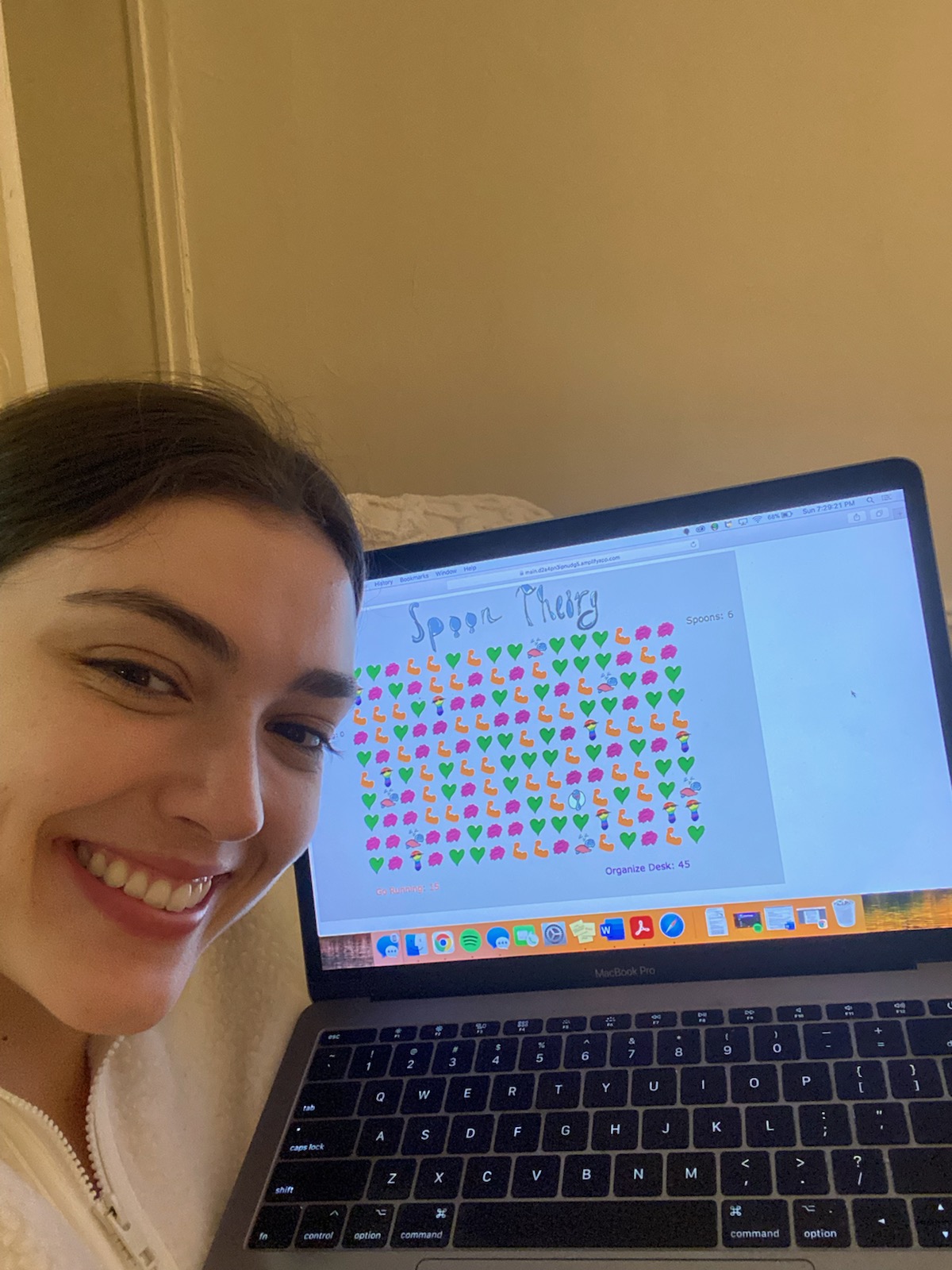
Since we playtested remotely, I had my testers send in selfies. Above, Mae was having the time of her life, despite experiencing a deeply broken version of the game.
Changes
- Much buggier
- I’ll describe the substantive changes under Version 2
This was a short-lived version. In theory, it was largely the same as version 2, but with the addition of a number of bugs that made it very rough to play. I fixed them for the proper version 2, which I’ll describe below. Despite the technical issues, I did get good feedback on how to make the rules and procedures for play clearer, and her frustrations heavily informed where I focused my bug-fixing energy for the next version.
Version 2:
Playtester:
- Penn, M, 26, Design Grad Student
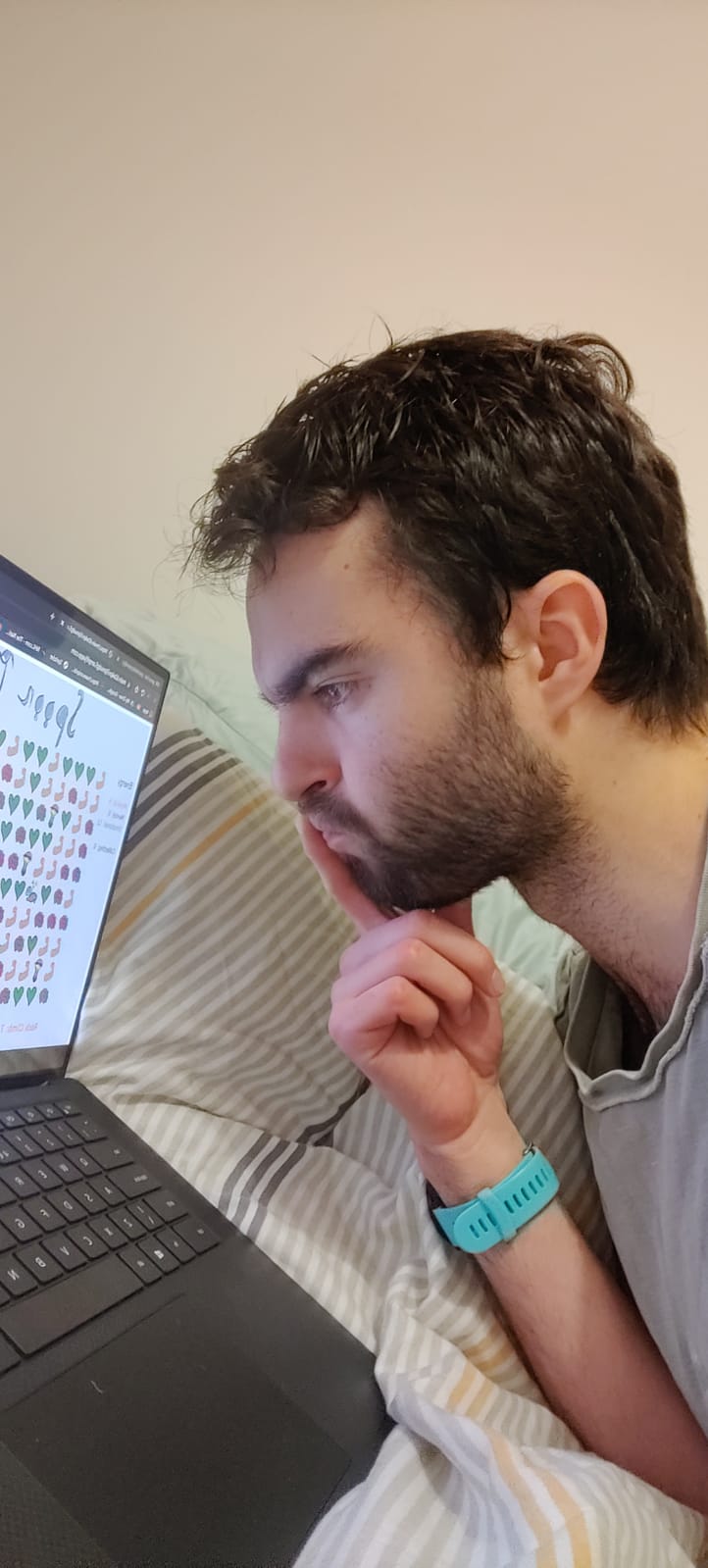
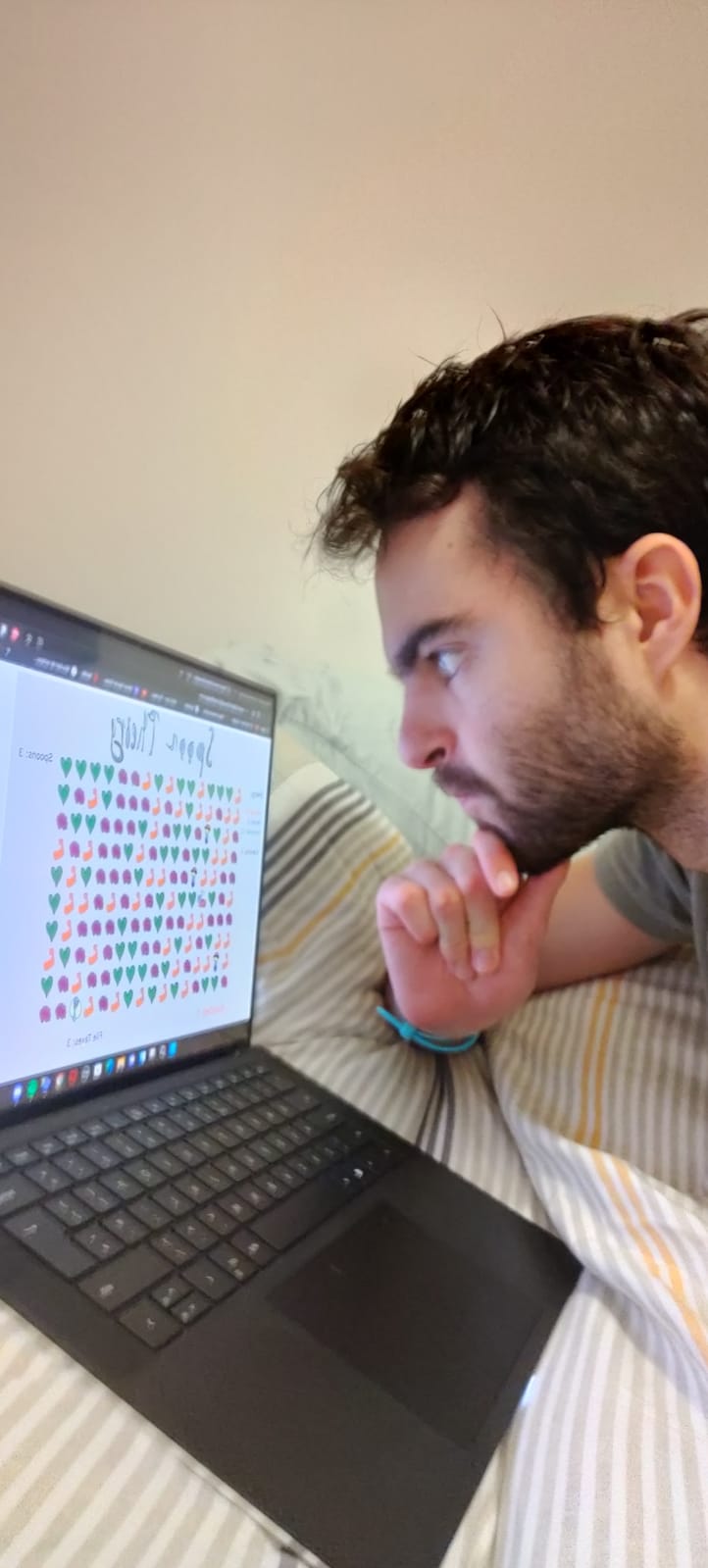
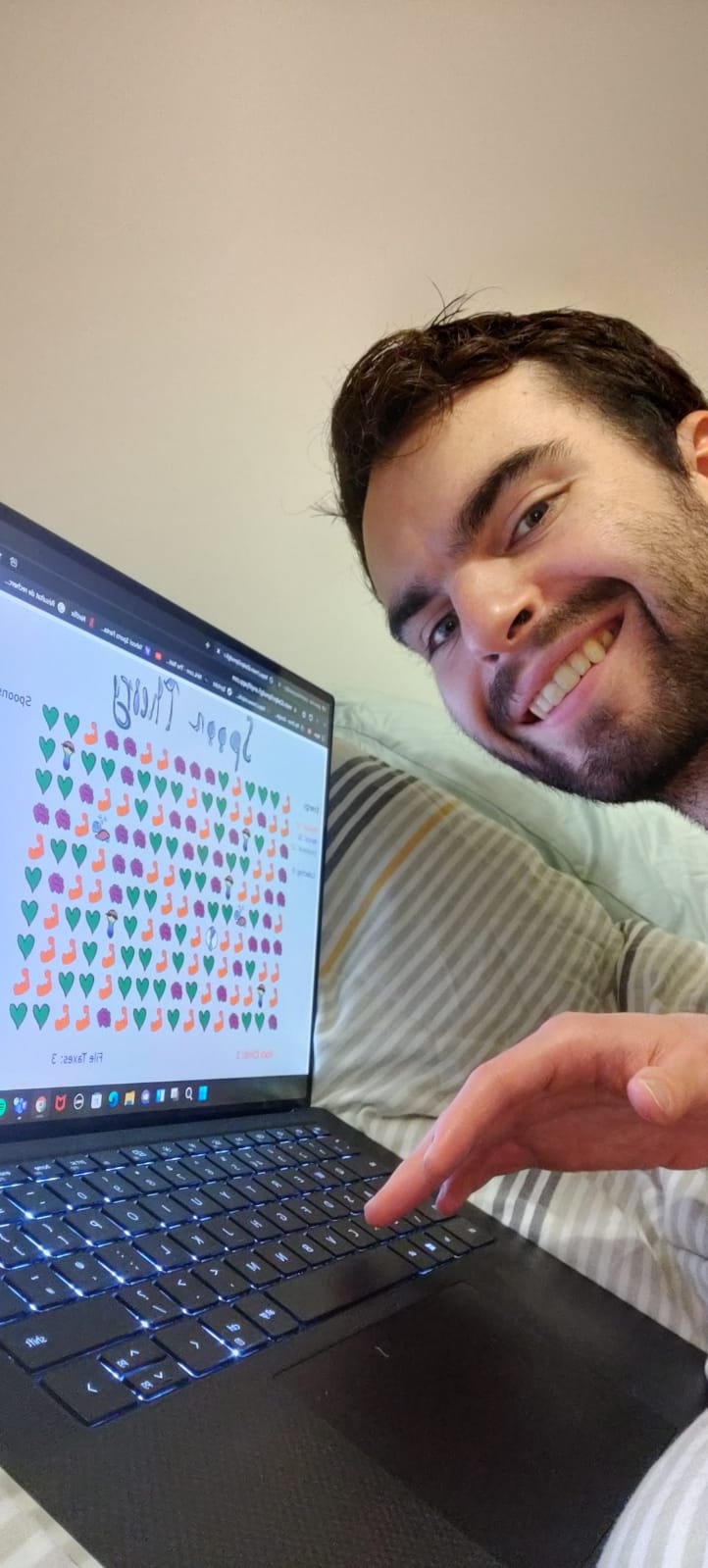
Above, Penn comes to an epiphany.
Changes for 1.5 & 2
- Moved to a 10 x 16 grid of tiles
- Power-up tiles, to mix-and-match colors and get additional turns
- Specific goals associated with each type of energy to achieve
- Thematic art
- On-screen trackers for energy acquired
For this version I still relied on basic instructions which was, it turns out, a mistake. It wasn’t clear that the players had to start matching tiles at themselves, nor how exactly the power-ups functioned. Although there were a lot of numbers on-screen letting them know how much energy they’d accumulated, the link between that and their goals wasn’t clear enough. However, the bugs were fixed.
Interestingly, Penn framed these limitations as a positive: at this point once you selected a tile, you couldn’t deselect it, which he remarked was a lot like life and contributed to the verisimilitude, even if it was frustrating.
Both playtesters for versions 1.5 and 2 also defaulted to trying to play on their phone rather than their computer, which wasn’t possible yet. Coming out of these playtests, with both playtesters having a lot of friction trying to play, my main goal was to make the objectives and rules very clear, and the actual experience of play smoother.
Version 3:
Playtesters:
- Chenny, F, 26, Data at Non-Profit
- Eng-Seng, M, 30, Environmental Engineer
- William, repeated
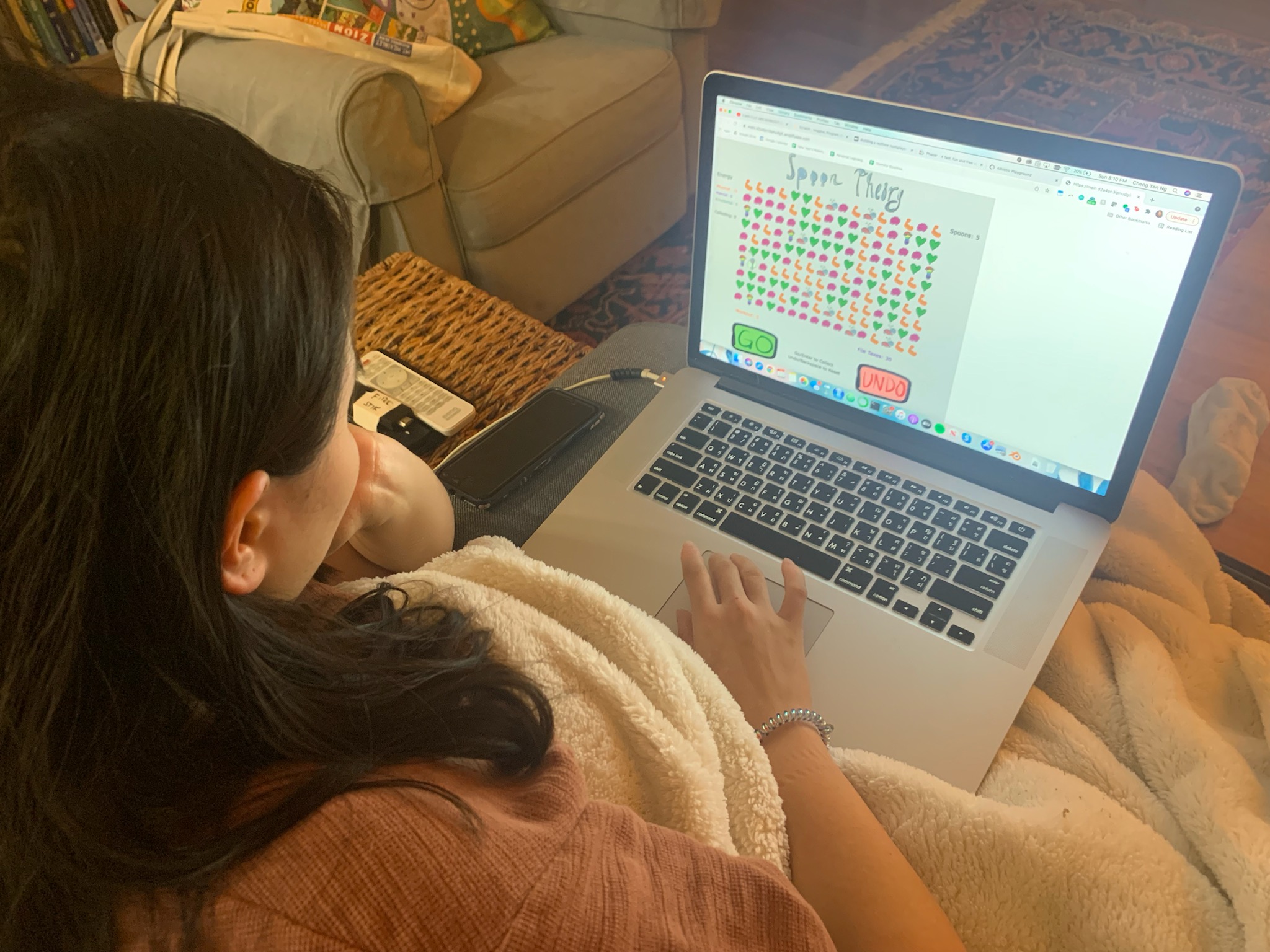
Chenny, contemplating her move as she steamrolls to victory. Note the addition of the ‘Go’ and ‘Undo’ buttons at the bottom of the screen.

A screenshot from William’s 50 minute game. The observant might notice some issues with the goal progress being tracked.
Changes:
- Created a much more complete rules document
- Added an ‘undo’ button to deselect tiles, and added a ‘Go’ button to select tiles, making it playable on mobile
- Added on-screen instruction text indicating how different features worked
In terms of being a fun game, this was easily the most successful version. There was much less friction trying to understand how to play, and every playtester was taking advantage of and planning around the different special tiles. They all enjoyed the basic experience of matching tiles, and collecting energy. However, they all also found it too easy – in the previous versions, playtesters struggled to win, which I tried to correct, but it turns out it was an over-correction.
One of the main issues was the ‘nap’ power-up tile which gave you extra turns. Everyone managed to collect enough of them that the turn limit was essentially trivial. Eng Seng summed up the issue excellently: ‘the availability of extra spoons kinda changes the feel from ‘disabled people have a hard time managing their limited resources’ to ‘I can do everything I set my mind to’. William even got a 50 minute game, just constantly chaining various special tiles together. For the curious – and to see the game in this iteration – here is a video which also includes him sharing some other thoughts on possible changes to make:
While this was a good sign in terms of how engaging the game was, it was also a very poor sign in terms of how much challenge it offered.
A number of players also noted that the fact that they were playing a spoons, but also using up spoons, was confusing – a fair point. The last thing players highlighted were the goals. In this version there were two goals to achieve, which they all did handily. However, there wasn’t actually a victory message, which was demoralizing, but not in an instructive way – instead, it made them feel like they hadn’t really achieved anything.
Final Version:

As seen above, in the rules!
Changes:
- Revamped UI
- Changed the path to match color of tile being collected
- Changed the player to a human
- Added 3rd goal
- Reduced board to 8 x 12
- Added a ‘Rules’ button
- Added win and loss screens
- Proportion of special tiles decreased; ‘extra turn’ tiles limited to 1 on screen at a time
- Small change: I added more sound effects, and normalized their volumes
Although I haven’t gotten a chance to playtest it yet, I made a final version of the game based on the feedback I got from playtesters. Looking at the changes in assessment from version 1.5 and 2 to 3, it seemed like the level of difficulty was the main roadblock to meeting my assessment goals. In this version, I tried to correct the points of friction that were unintended – i.e., because of bugs, or unfinished work – and instead increase the actual challenge of the game. Although I haven’t gotten a chance to playtest it yet, I’m optimistic that it will score better. The size of the board and goals, as well as the number of special tiles are all balance levers I can tweak going forward to hit the sweet spot for challenge, and learning.
Another way to address these issues, of course, would be expanding the mechanics and the game itself, which I think could definitely be fruitful but is beyond the scope of these two weeks! This was a good lesson in the limitations of digital games; I was often constrained by the time and challenge of making changes, not a lack of ideas I wanted to try out.
Link to the Game
The game is playable here: https://main.d2a4pn3ipnudg5.amplifyapp.com/, and I’d love for y’all to try it, and to get your thoughts!
Rules
The rules are available either by clicking the ‘Rules’ button in the top-right, or here: https://docs.google.com/document/d/1fKsGwYSWxpJx5TiOxiBLEXRsW5fxgR1KIeH4Rrd37HA/edit (a Google doc version of what I described earlier).
How to Play Video
Gameplay Video of Current Version



I really like this. I think if you had more tools like the napping spoon (maybe a “No” spoon, lol!” it would be more of a teaching game, i.e. teaching how to navigate low energy conditions.
You could also have conditions (someday!) that gave you fewer spoons. It made me think a bit of this essay https://whatever.scalzi.com/2012/05/15/straight-white-male-the-lowest-difficulty-setting-there-is/
I really enjoyed playing. I slowly realized as I played that planning was the most important thing to do. I’ve been playing Best Fiends (yes, ugh) and the difference between the two was interesting. In many ways, this si more fun, but also reinforces the message. I’d love to see more levels!
I think really short instructions next to the board would be helpful. And maybe a tip jar because its’ fun!
Thank you!
I see what you mean about adding mechanics to help with the learning – I definitely want to add some more, along with a couple levels to introduce them. In addition to more tiles, was also thinking that making some goals require long chains – or adding additional rewards for getting them? – could add a lot without being too difficult to implement.
I was actually originally thinking about randomly just giving players fewer spoons, because that’s life sometimes, but I think your suggestion of actually associating it with a specific condition would be a lot more actively instructive! Love the framing in that article.
I hadn’t played Best Friends, I’ll have to take a look – the games I was thinking about were Troll Patrol and Grindstone – I think the latter is my favorite Match-X so far.
Great work on building this digital game, from the message behind it to the engaging artwork and gameplay! I appreciate that you iterated and refined the rules multiple times based on user feedback and your own observations on opportunities for improvement.
If you want to expand on this project idea, I think a potentially interesting way to increase the “challenge” while keeping the game engaging is to introduce timers…in real life, everyone, especially people with disabilities, must carefully manage the time and energy they have to make their day productive and achieve their goals! Just something to consider!